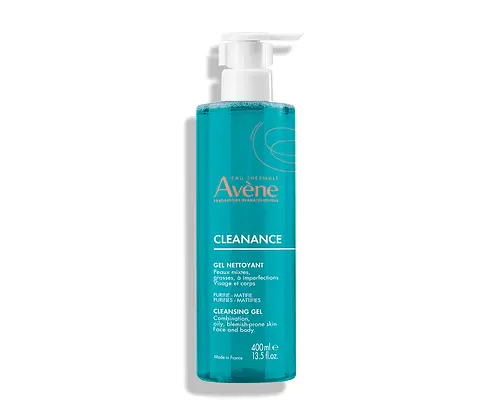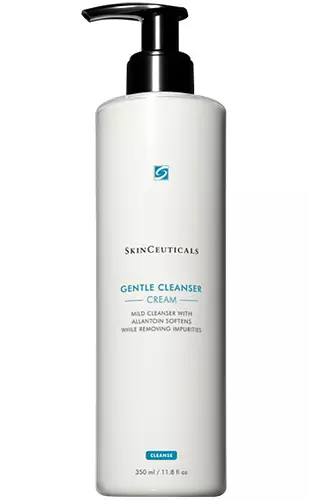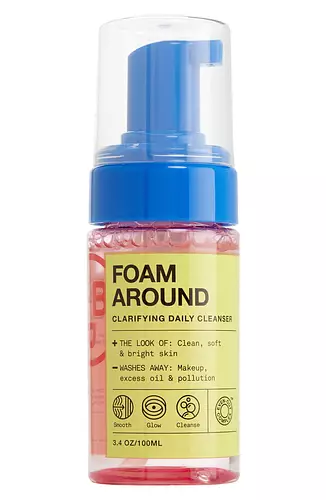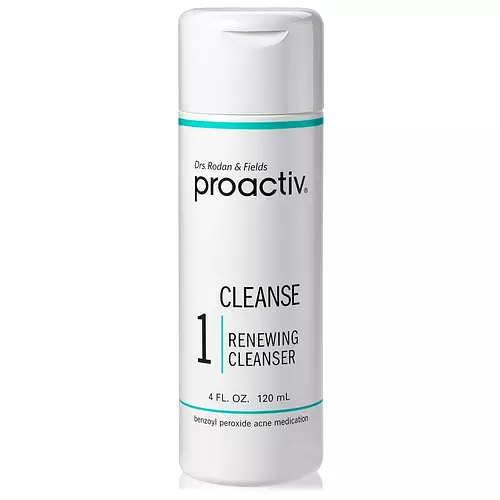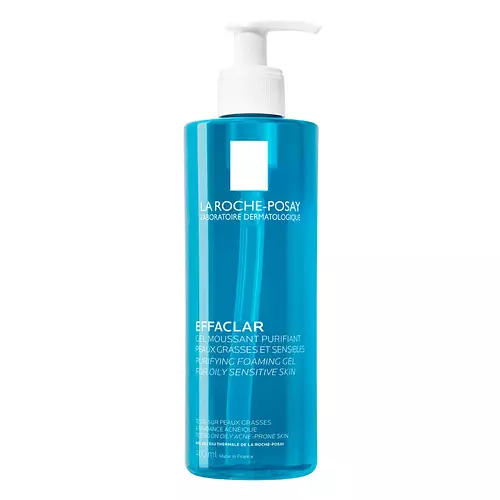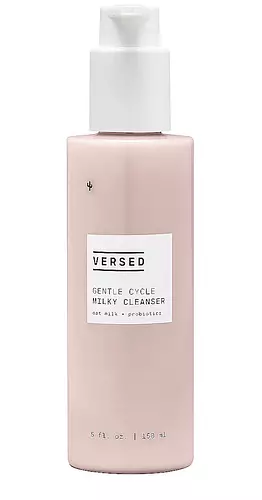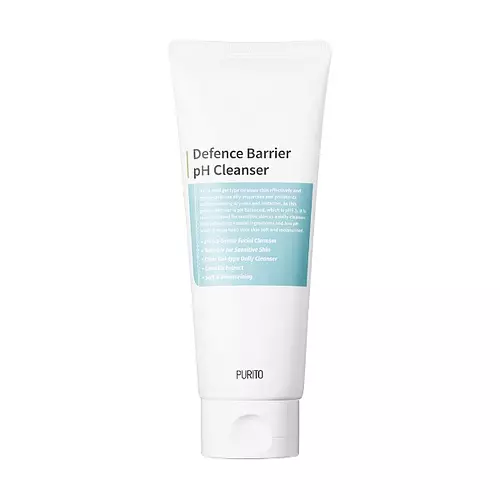Panoxyl Acne Foaming Wash Benzoyl Peroxide 10% Maximum Strength Versus La Roche-Posay Toleriane Hydrating Gentle Face Cleanser
Updated on June 07, 2024
Overview
What they are
These products are both reef safe face cleansers. They have a total of 4 ingredients in common
Suited For
They're both likely to be good for fighting acne, dry skin and brightening skin
Free From
They both do not contain any common allergens, oils, parabens or sulfates
We independently verify ingredients, and our claims are backed by peer-reviewed research. Spot a product that needs an update? Let us know.
Ingredient Info
Panoxyl Acne Foaming Wash Benzoyl Peroxide 10% Maximum Strength 20 ingredients
La Roche-Posay Toleriane Hydrating Gentle Face Cleanser 13 ingredients
At a glance
Click on any of the items below to learn more
Panoxyl Acne Foaming Wash Benzoyl Peroxide 10% Maximum Strength 20 ingredients
La Roche-Posay Toleriane Hydrating Gentle Face Cleanser 13 ingredients
Notable Ingredients
This product contains 1 ingredient that may have this attribute:
This product contains 1 ingredient that may have this attribute:
Benefits
This product contains 1 ingredient that may have this attribute:
This product contains 1 ingredient that may have this attribute:
This product contains 1 ingredient that may have this attribute:
Concerns
This product contains 2 ingredients that may have this attribute:
This product contains 2 ingredients that may have this attribute:
This product contains 1 ingredient that may have this attribute:
This product contains 1 ingredient that may have this attribute:
This product contains 3 ingredients that may have this attribute:
This product contains 2 ingredients that may have this attribute:
Notable Ingredients
This product contains 1 ingredient that may have this attribute:
This product contains 1 ingredient that may have this attribute:
This product contains 1 ingredient that may have this attribute:
Benefits
This product contains 2 ingredients that may have this attribute:
This product contains 1 ingredient that may have this attribute:
This product contains 2 ingredients that may have this attribute:
This product contains 1 ingredient that may have this attribute:
This product contains 1 ingredient that may have this attribute:
This product contains 1 ingredient that may have this attribute:
This product contains 1 ingredient that may have this attribute:
This product contains 1 ingredient that may have this attribute:
This product contains 3 ingredients that may have this attribute:
Concerns
This product contains 1 ingredient that may have this attribute:
This product contains 1 ingredient that may have this attribute:
This product contains 1 ingredient that may have this attribute:
Ingredients Side-by-side
Ingredients Explained
These ingredients are found in both products.
Ingredients higher up in an ingredient list are typically present in a larger amount.
Glycerin is already naturally found in your skin. It helps moisturize and protect your skin.
A study from 2016 found glycerin to be more effective as a humectant than AHAs and hyaluronic acid.
As a humectant, it helps the skin stay hydrated by pulling moisture to your skin. The low molecular weight of glycerin allows it to pull moisture into the deeper layers of your skin.
Hydrated skin improves your skin barrier; Your skin barrier helps protect against irritants and bacteria.
Glycerin has also been found to have antimicrobial and antiviral properties. Due to these properties, glycerin is often used in wound and burn treatments.
In cosmetics, glycerin is usually derived from plants such as soybean or palm. However, it can also be sourced from animals, such as tallow or animal fat.
This ingredient is organic, colorless, odorless, and non-toxic.
Glycerin is the name for this ingredient in American English. British English uses Glycerol/Glycerine.
Learn more about GlycerinPropanediol helps absorb ingredients into your skin, boosting their benefits. It can act as an emollient, making your skin softer. Propanediol can help products last longer by boosting the properties of preservatives within the formulation.
Propanediol is not likely to cause sensitivity and considered safe to use.
It is derived from corn or petroleum with a clear color and no scent.
Learn more about PropanediolWater. It's the most common cosmetic ingredient of all. You'll usually see it at the top of ingredient lists, meaning that it makes up the largest part of the product.
So why is it so popular? Water most often acts as a solvent - this means that it helps dissolve other ingredients into the formulation.
You'll also recognize water as that liquid we all need to stay alive. If you see this, drink a glass of water. Stay hydrated!
Learn more about WaterChances are, you eat sodium chloride every day. Sodium Chloride is also known as table salt.
This ingredient has many purposes in skincare: thickener, emulsifier, and exfoliator.
You'll most likely find this ingredient in cleansers where it is used to create a gel-like texture. As an emulsifier, it also prevents ingredients from separating.
There is much debate on whether this ingredient is comedogenic. The short answer - comedogenic ratings don't tell the whole story. Learn more about comegodenic ratings here.
The concensus about this ingredient causing acne seems to be divided. Research is needed to understand if this ingredient does cause acne.
Scrubs may use salt as the primary exfoliating ingredient.
Learn more about Sodium ChlorideIngredient Ratings
Here's what our community thinks of the ingredients in these products.
When to use
Panoxyl Acne Foaming Wash Benzoyl Peroxide 10% Maximum Strength 20 ingredients
La Roche-Posay Toleriane Hydrating Gentle Face Cleanser 13 ingredients


Reviews
Here's what our community thinks
Panoxyl Acne Foaming Wash Benzoyl Peroxide 10% Maximum Strength 20 ingredients
utr1cular1a
Disenfecting, a bit drying, but worth it.
The peroxide is going to break down the dead skin cells and any dried blood in your pores. It helps to...
Disenfecting, a bit drying, but worth it.
The peroxide is going to break down the dead skin cells and any dried blood in your pores. It helps to kill the bacteria in them, which causes pimples and cysts. I've been dealing with fairly severe acne for a while, and I have problems with skin picking, but this helps. Make sure to moisturize well with it. It's steadily been eradicating the infections and cysts. Just avoid using medicated moisturizers directly afterward. Things like vitamin c or retinol will react with leftover peroxide, degrading and becoming less powerful. Either use a moisturizer without reactive acidic ingredients, or apply about 30 minutes after as not to waste the active ingredients in your moisturizer!
bsabrina
hit or miss
after developing cystic acne on my chin and along my cheeks, i saw this product on tiktok and decided to give it a try. Loved it for a...
hit or miss
after developing cystic acne on my chin and along my cheeks, i saw this product on tiktok and decided to give it a try. Loved it for a few months, it definitely cleared my skin during the summer. helped a lot with cystic acne and texture. It got too drying when the seasons changed. also seemed to stop working for me after a while? I'm not sure what happened but suddenly it didn't work for me anymore. maybe better for really oily skin.
La Roche-Posay Toleriane Hydrating Gentle Face Cleanser 13 ingredients
BubbIes
I’m very sorry to say that I had a really bad reaction to this, even though it’s supposed to be for sensitive skin. I’m almost positive it’s the...
I’m very sorry to say that I had a really bad reaction to this, even though it’s supposed to be for sensitive skin. I’m almost positive it’s the tocopherol, which is known to be irritating and comedogenic. I think it’s decently tolerated by most, especially in a wash, but if you have sensitive skin it’s worth being cautious. Other than that, I did like how hydrating this was and how it cleansed my skin. I would rate it more kindly, but for a gentle wash it really shouldn’t have something like tocopherol.
lunarlilies
decent!
i’d say this is a good choice for those with oily skin, but it was slightly irritating when i first used it, though that pretty much went...
decent!
i’d say this is a good choice for those with oily skin, but it was slightly irritating when i first used it, though that pretty much went away later










